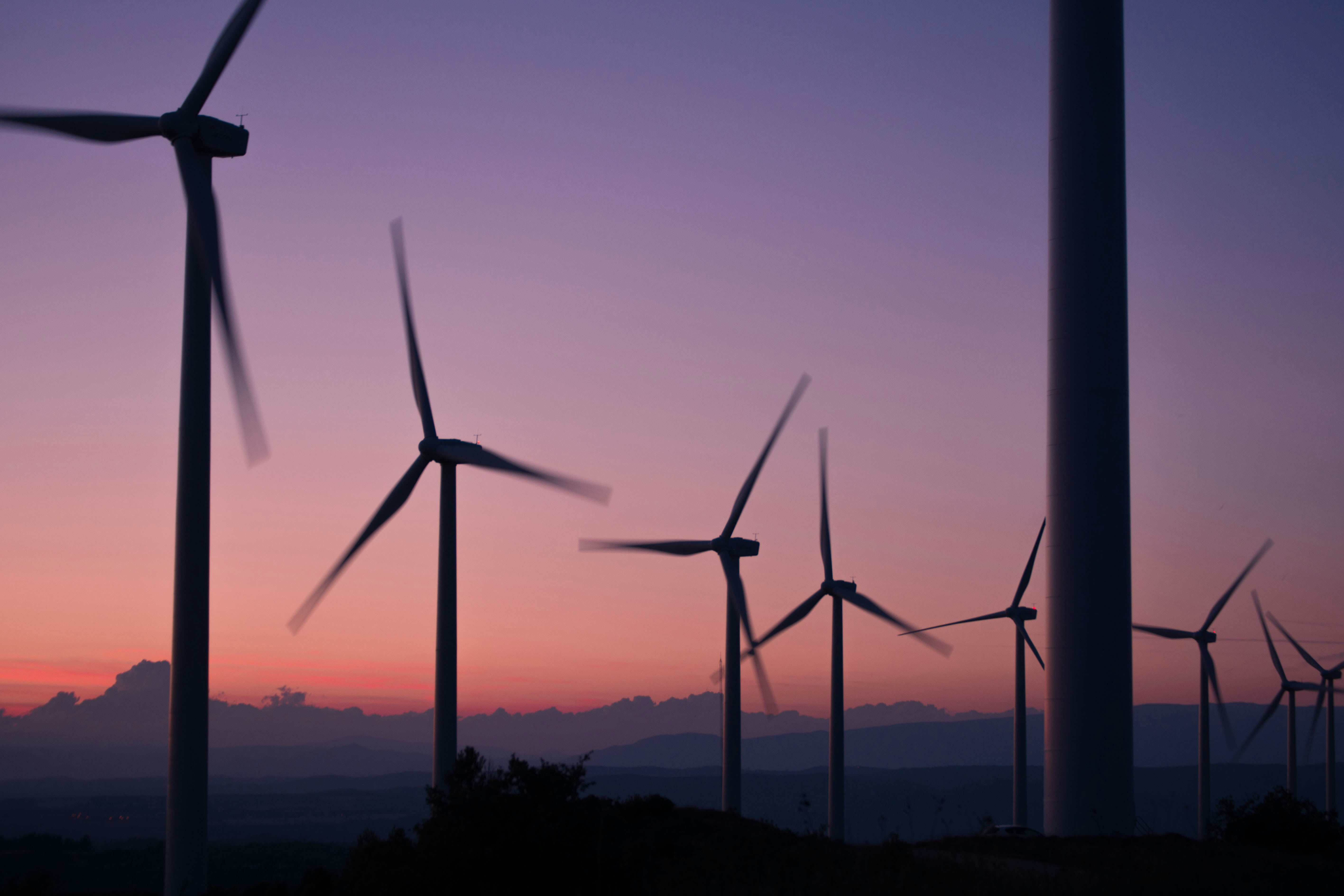It is two weeks since the Carbon Trust hosted the inaugural Energy Transition Acceleration Forum at the British Library in London. It was an inspiring and solutions-focussed day, with an agenda replete with experts from across the energy ecosystem, all with a shared goal to advance the just energy transition at the pace and scale needed.
Through keynotes, expert panel discussions and interactive networking sessions, our incredible speakers created an environment for open, honest dialogue to inspire action, create opportunities for new collaborations and unlock pathways to progress.
The openness to collaborate was a common thread that ran throughout the day, with the takeaways below giving a snapshot of what was discussed.
We are in the emerging age of electricity
Global electricity demand is rising. Indeed, since 2010 it has grown twice as fast as total energy demand and is projected to continue doing so. Cooling buildings, powering appliances and the electrification of light industries have all added to this rising demand for electrification. Mary Burce Warlick, Deputy Executive Director of the IEA highlighted in her keynote speech that the amount of finance going into grids and renewables is more than all aspects of fossil fuel supply, oil, gas combined. This is a very important signal of the shift towards a more electrified, renewables-rich energy system. If we want to bring people on board with the transition, we also need to think and communicate more about what energy provides in terms of services and less about the electron itself. As Octopus Energy’s Arthur Downing Strategy Director put it, there are building blocks to a resilient grid system that need to be knitted together across the value chain: renewable energy; electrification of demand, efficiency and digitisation of system operations.
A diverse energy system is a resilient one
For a country to successfully and equitably decarbonise, it needs a diverse system that addresses multiple challenges at once. Reducing fossil fuel use; increases in efficiency and renewable energy; more local power generation; electrification of demand; digitisation of system operations, and ensuring consumers benefit from the transition are all on the list.
The Carbon Trust’s Amanda Luna illustrated the need for a diverse power system with the experience in Latin America, where in some countries a large percentage of energy is sourced from hydropower. This has led to energy outages during drought periods in recent years, affecting local people's access to electricity. A more diverse electricity system will address this issue, providing more secure, equitable access to electricity for all.
This is a complex challenge, requiring consideration of all issues and elements, but the solution can give rise to local benefits, for consumers and communities. By focusing on these benefits, and communicating honestly and with common language, we can engage communities in the transition.
Leadership in the energy transition can be in the willingness to do difficult things
As an example, the UK can demonstrate this leadership by building the infrastructure and power systems to deliver its goal for 95% clean power in its grid mix by 2030. The £200 billion investment in clean power will lead to affordable, secure, non-volatile priced energy while providing the jobs and local community benefits that are contributors to building a stronger economy. It will take a ‘herculean effort’, but the UK’s Head of Mission Control Chris Stark said at ETAF that he is confident that the 2030 mission can be achieved, with most of the projects crucial to delivering this goal already in motion.
On doing difficult things, in our opening panel on ‘building local solutions to accelerate the global transition’ we learned that financial institutions with policies banning any investments in coal might have the unintended consequence of not allowing investment in coal retirement. Boards may need to ‘look outside the box’ to green light policies that allow early coal retirement transactions, rather than a blanket ban on any coal-related investments.
The balance between clean and fossil fuel investment needs to be redressed, fast
Current levels of investment in fossil fuels in comparison to clean energy are around 1:1. By 2030 this needs to change to 4:1 in favour of clean energy. To redress the balance of investment within this decade, governments need to take a systems approach while also de-risking each component of the power system to crowd in private capital. For example, the UK Government has created Great British Energy, a publicly owned energy company, set up to work closely with industry and local authorities to unleash the private investment required and, ultimately, ensure UK taxpayers and communities reap the benefits of clean, secure, home-grown energy.
The panel on ‘investing in the transition’ discussed how this emphasis on making the energy transition politically attractive is also critical to unlocking private capital in emerging markets, where government support is less advanced, but investors have a broader set of risks to contend with. In these markets, development finance institutions (DFIs) have a critical role to play to create de-risking instruments that are coordinated with the efforts of other public actors and, critically, private sector investors. Such blended finance structures can create investable opportunities in emerging markets that allow the organisations involved to meet their objectives, whether they are financial returns, impact or both. Scaling up delivery of renewable projects is also going to require creating scalable and replicable processes for governments, DFIs and private sector investment.
A prosperous economy needs renewables, but policies are needed at a local level
Operational savings, job creation, environment improvements and long-term resilience offered by a renewable based system enable the clean energy transition central to building prosperous, thriving economies. Countries that have benefitted economically from renewable industry growth had a strong domestic demand driven by policy.
Achieving a balance between investment needs and the benefits of the transition will require coordinated policy efforts, investments in technology and a long-term commitment to decarbonisation. Indeed, there are genuine costs associated with continuing to rely on a fossil fuel-based system. Many of these costs of inaction are societal, as explained by the Carbon Trust’s Jarredine Morris who cited a 2023 study by the Center for Research on Energy and Clean Air. It found that pollution from power plants contributes to around 28,500 premature deaths in South Africa each year. So, when weighing the costs of the transition to clean energy, we must look at the true cost and return on investment including the financial and societal costs of the current system.
AI and digital technology can be an enabler for the transition
As renewable power and storage grows, the grid needs to model both the supply and demand sides. AI can help through developing complex models covering the whole energy distribution system to run a smart, optimised grid. More generally, AI can help with productivity, efficiency, optimisation, better battery technology and more. In fact, it is already being used by many of organisations including Google and The Centre for Net Zero. The latter’s Faraday AI model produces synthetic smart meter data conditioned on specific household characteristics to help simulate how households consume energy and modelling specific scenarios.
This has to be balanced with the fact that AI currently uses vast amounts of energy and natural resources and its use, including energy-use, is growing exponentially. In the long term, a more holistic strategy between energy, AI and the infrastructure needed is vital.
Politics matter
The US’s withdrawal from the Paris Agreement whilst expected has damaged confidence in the COP process and will no doubt have a knock-on effect on other countries’ ambition. The timing of it is keenly felt in the month that countries were supposed to submit their Nationally Determined Contributions (although this has now been put back until September). The pause on funding for clean energy through the Inflation Reduction Act and on leasing for both onshore and offshore wind is already starting to be felt.
That said, momentum for the energy transition remains and there is widespread support from countries doubling down on investments in clean energy. Rachel Kyte, UK Special Representative on Climate pointed out that there is a plurilateralism emerging of countries from the Global South and the Global North that are committed to moving the transition more quickly. Building on this optimism and pragmatism, Bernice Lee, Distinguished Fellow and Senior Advisor at Chatham House, suggested coalitions and collaboration through value chains and where investments are going to may be more effective than pursuing the traditional approach of bi or multi-lateral agreements at a country level. Coalitions that cut across sectors’ value chains will help sidestep current and future political tensions that threaten to slow down the energy transition. Optimism remains that market and financial trends are still heading in the right direction despite recent geopolitical challenges, and that transitioning to clean energy is the rational economic choice.
And finally: A systems approach is needed for the global transition
Underlining everything that was spoken about is that a just energy transition is critical, with a decarbonised power system sitting at the heart of every country's transition to Net Zero.
We collectively need to go faster if we are to reach our respective goals. The challenges and opportunities look different in different parts of the world, whether that is addressing load shedding in South Africa, meeting the winter heating requirements of Kazakhstan, or having sufficient backup power during the El Niño phenomenon in Latin America.
Renewable energy build-out, grid expansion and coal transition decisions are all connected and dependent on each other. Decisions taken in each one has an impact on the next. The reality is that the energy system of the future is a much more interdependent one, requiring flexible solutions to optimise supply and demand, thereby reducing energy costs. However, the system goes beyond technical optimisation, and one must acknowledge the interplay with jobs, livelihoods, investment needs, supporting policies and regulations.
Through the Carbon Trust’s experience across multiple areas of the energy transition, we see a gap that needs addressing right now. There are a lot of existing plans, but these are not comprehensive or urgent enough. They often do not take a systems view that factors in increasing energy flexibility, grid investment and planning requirements, or provide clear, actionable steps to begin to undertake that system change at the speed required.
I spoke about the Carbon Trust’s Energy Transition Greenprint for the first time at ETAF, it is an evidence-based integrated systems methodology based on locally driven insights that simultaneously considers technical, social and economic drivers.
Through a systems approach it navigates the options available to decarbonise the power sector and sets out a clear and actionable implementation plan for governments that creates a foundation for the delivery of energy security, affordability and prosperity for all.
In short, Greenprint aims to provide actionable steps to define a country’s specific trajectory towards a clean power system. This is a priority for the global transition to clean power and to ensure that every country has the expertise at their disposal to kickstart their own transition journeys. This willingness to collaborate is clear from the conversations and ideas coming out of ETAF. Now we need to get on and do it.
We are calling on funders, governments and partners across the energy sector to join us and bring this vision to life.






